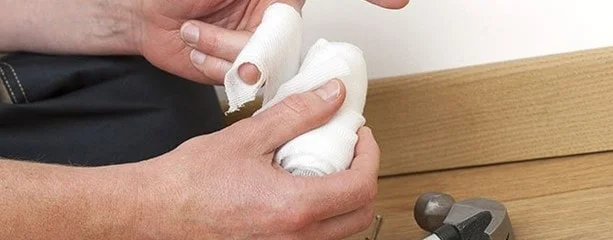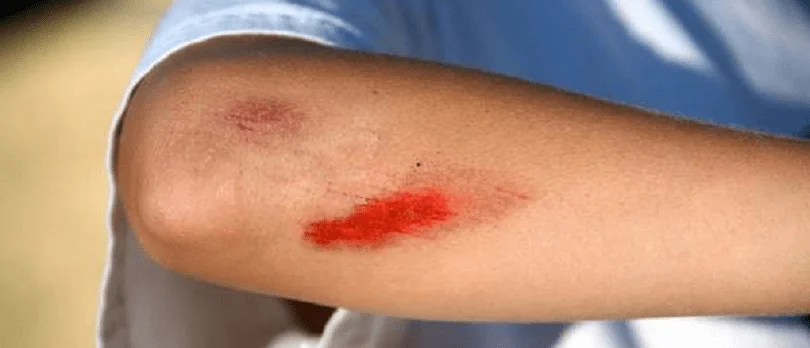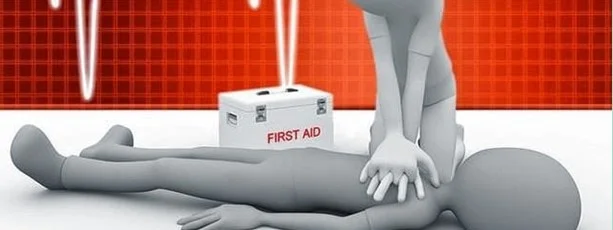4A. First Aid in Accident
2024-03-04 16:00
Baby sitters and domestic helpers, who are usually left at home with small children, have basic knowledge to cope with accidents and administer first aid on injuries of the children they care for. They should know how to stay calm, act quickly and be sensible enough to prevent aggravating the injury and help save the child. In case of an emergency, speed is of paramount importance. Seconds can mean the difference between life and death, whether it is a minor or serious injury.

It is important that one keeps calm in face of an emergency. Deal with the incident as quickly as you can, but with care. Do not aggravate the injury by unnecessary movements. Keep the patient quit, warm and patient is far from further danger while you seek for help. Phone the doctor or get someone to call the doctor, and bring the patient to the hospital. Avoid showing the patient his injury, as he may panic. Speak softly and reassure him of safety.
In this chapter, you will learn the basic measures necessary to give your employers and little masters a safe but exciting life. At their early age, children are not usually taught how to deal with a crisis without an adult around. Both you and the children can learn how to help yourselves and others. You can teach them how to administer first aid and to seek for help.
Injury
Also called confusions, this injury is caused by the impact of a blunt object which crushes the tissues of the skin. Hot compresses will help ease the pain and swelling. Cold compresses may also be used. Never massage the bruised area. This will do more harm than good.
Bleeding is the mechanism of tendon tissue to be clean. So, no need to panic. Minor bleeding is not heavy, but must be addressed urgently so as not to get worse, It is very helpful if you can finger pressure to control bleeding.
Below are some ways how to handle bleeding:
- Rinse the wound in cool running water to slow down blood flow and clean the Wound.
- Clean the cut with mild soap and water, tap it dry with a cotton ball, and apply antiseptic to kill all germs.
- Remove any grit or foreign matter near the surface with cotton and the sterilized Do not dig into the wound, as this may infect it.
- Dress the wound with sterile dressing and secure it with medical tape.
- If the wound gets swollen and hot, it may have been infected. Consult a physician.
Scrapes

If possible, wash your hands before handling the injury to minimize risks of infection. Never wipe away blood clots as they may restart bleeding. Use a sterilized gauze, not plain cotton, to cover the wound as fibers will stick on the wound. Do not remove the original dressing, except when cleaning, to enable the wound to form a scab and heal quickly.
Below are some ways how to handle bleeding:
- Rinse the wound in cool running water to slow down blood flow and clean the Wound.
- Clean the cut with mild soap and water, tap it dry with a cotton ball, and apply antiseptic to kill all germs.
- Remove any grit or foreign matter near the surface with cotton and the sterilized. Do not dig into the wound, as this may infect it.
- Dress the wound with sterile dressing and secure it with medical tape.
- If the wound gets swollen and hot, it may have been infected. Consult a physician.
A slight pull on the structures of arms and legs may lead to swelling with sharp period of pain. Let the limb rest as long as possible and avoid much movement. Hot compress will help ease the pain and swelling. A light bandage may be applied to minimize movement. In severe cases, involving broken bones or dislocations, the patient should have the limb bandaged or the arm in a sling, and brought to the hospital for casting.
Nose Bleeding

Below are some ways how to handle bleeding:
- Have the patient sit down and lean slightly with the head looking upward with the mouth open, so that the blood clot does not obstruct the airway.
- Let the patient breath through his mouth, while pinching the soft part of the nose.
- Let the patient spit out any blood that gets to the mouth.
- If bleeding continues, consult a physician.
CPR

Also known as mouth-to-mouth resuscitation, this method is used when a patient stops breathing until professional help arrives.
Below are some ways how to do Cardio pulmonary Resuscitation (CPR):
- Lay the patient on his back
- Place pillows or support under the shoulders
- Be sure there is no foreign matter in his nose and mouth to prevent breathing.
- Tilt his head back and lift the neck to point the chin straight up.
- Pull the jaws up to move the tongue away from the back of the throat.
- Pinch the nose. Press mouth over the patient’s mouth and blow.
- Check for exhalation
- If check is distended, press gently to expel the air.
If the patient is a child or an infant, cover his nose and mouth with your mouth, And proceed as above. For an adult, blow vigorously at about 12 breaths per minute. For a child, use shallow breaths of about 20 per minute. For babies you can use the rocking technique moving the infant horizontally and vertically to 12 times per minute. Pocket masks are already available for use in CPR.
Choking

Heimlich Manuver
In standing position
- Hug the patient from behind, pressing your fist just below the ribs and above the navel, thumbs towards the body.
- Bend your arms at the elbow
- Grasp your fist with the other hand and thrust towards the patient's victim continuously until the obstructing object is spat out
In sitting position
- Use the same procedure as above, except that you will be kneeling behind the patient
- If your patient is an infant, hold him onto your lap and perform the maneuver.
In prone position
- If the victim has fallen to the floor, you have no time to get him into a standing or sitting position.
- Turn his face upward and kneel beside his hips facing the stomach.
- Place the wrist of your hand where you would put your fist in the other two positions.
- Place your hand over each other
- Thrust towards the abdomen by leaning forward
- In case an adult is the one in trouble, a child can administer to him in this position.
Children are particularly at risk of choking because of their tendency to put things directly into their mouths. Small object like beads, buttons, coins and marbles pass harmlessly through the digestive system and are eliminated.
Suspect chocking and act accordingly if you notice the following symptoms:
- The patient is trying to cough
- The patient is gripping his throat, making gasping sounds
- The patient is unable to speak or breathe
- The patient turns blue around the face and lips
- The patient has strained veins in the neck and face
You may also try putting the person over a table hanging upside down. Slap hard between the shoulder blades to urge to cough out the swallowed object.
Symptoms include nausea, vomiting, stomach spasms, diarrhea, and weakness. Rest and large quantities of water is recommended.
Jika anda memiliki pertanyaan, harap tinggalkan pesan di halaman Facebook kami dan kami akan segera membalas persan anda
Kung mayroon po kayong mga katanungan, maari po na mag-iwan ng mensahe sa aming Facebook para po sa iba pang katanungan
Back : Book Index > Book Sub-Index
Next Post : 4B. In Case Of Fire
![]()




